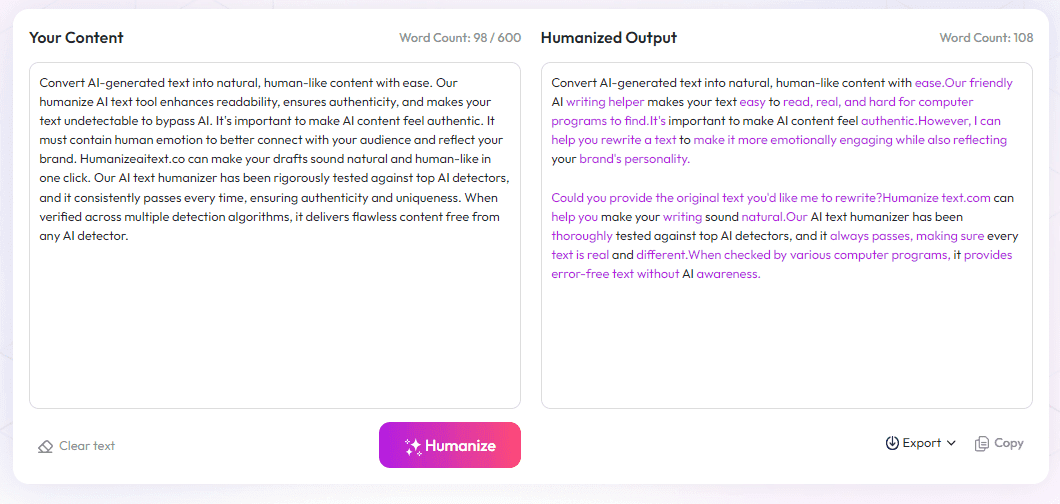Table of Contents
Starting a book is exciting, but let’s face it—getting that launch right can feel overwhelming. You might worry about missing deadlines, reaching enough readers, or simply not knowing where to start. It’s totally normal to feel a bit lost at this stage—that’s where a clear plan can make all the difference.
Stick with me, and I promise that by the end, you’ll have a simple, step-by-step guide to make your 90-day launch smoother and more successful. This plan breaks everything down so you won’t be left guessing, and you’ll see just how doable it can be.
In the next lines, I’ll show you a straightforward schedule to help you prepare, promote, and celebrate your new book like a pro. Ready to turn your author dreams into reality? Let's do this!
Key Takeaways
Key Takeaways
- Set clear goals for your book launch, like sales numbers or reviews, to stay focused and track progress. Build an audience early by engaging on social media, offering freebies, and reaching out to reviewers and influencers. Create a promotional schedule that includes teasing your book before launch, hosting events during launch week, and maintaining momentum afterwards. Track your metrics regularly and adjust your strategies if something isn’t working. Know your market trends to position your book well, especially in digital formats like ebooks and audiobooks. Building relationships and staying flexible are key to long-term success, not just a quick launch.

The Most Critical Part of a 90-Day Book Launch Plan: Setting Clear Goals and Building Your Audience
The foundation of a successful 90-day book launch is knowing exactly what you want to achieve and doing the groundwork to reach those goals. Without clear objectives, your promotion efforts can fall flat, wasting valuable time and resources.
Start by defining specific goals for your launch. Are you aiming for a certain number of sales, reviews, or new subscribers? Perhaps you want to establish your authority in a particular genre or niche. Clear objectives help you stay focused and measure progress along the way.
Next, develop an engaged audience before the launch. This means cultivating relationships with potential readers, influencers, and reviewers early on. Use platforms like social media to share updates, share snippets from your book, or host engaging contests.
Build an email list by offering freebies related to your book, such as a sample chapter or a related worksheet. An engaged email list becomes your biggest asset during and after launch, giving you a direct line to people interested in your work. Beta readers and early reviewers can also generate buzz, especially if they leave honest reviews on launch day.
Take time to understand your target audience’s habits—what platforms they’re active on, what type of content they enjoy, and when they’re most likely to buy books online. This knowledge guides your promotional timing and messaging strategies.
Creating a Strategic Promotional Schedule
A grounded plan involves mapping out promotional activities over the 90 days. Break it into phases: pre-launch, launch week, and post-launch.
In the pre-launch phase, focus on teasing your book—share cover reveals, behind-the-scenes looks, and countdowns on social media. Reach out to influencers and reviewers to secure early endorsements, which you can showcase on launch day for credibility.
During launch week, coordinate a targeted blitz. Schedule social media posts, email announcements, and promotional ads to maximize visibility. One successful strategy is hosting a launch event online, such as a live Q&A or reading, which can boost engagement.
Post-launch, keep up the momentum with ongoing marketing. Offer limited-time discounts, participate in book promotion sites, and gather reviews. Remember, consistency helps keep your book visible amid the competitive market, which is valued at hundreds of billions globally.
Key Metrics and Adjustment Techniques
Track your progress meticulously. Use sales data, website traffic, email open rates, and social media engagement to evaluate what’s working and what isn’t.
If you notice certain promotions aren’t performing well, adjust your approach—perhaps by shifting timing, refining your messaging, or exploring new outreach avenues like writing compelling forewords for your book or collaborating with different influencers.
Being flexible is crucial. Sometimes, a small tweak can significantly boost your reach. Set monthly benchmarks for sales, reviews, and follower growth to stay motivated and on track for your 90-day goals.
This strategic start sets the stage, but remember, a truly effective book launch isn’t just about quick wins. It’s about creating lasting relationships with readers and consistently promoting your work for sustained success.

Understanding the Market Landscape and Your Position in It
Knowing the current state of the book industry helps you make smarter choices during your launch.
The global book market is worth around $150–160 billion, with trade and educational books making up a big chunk of it.
Fiction, which brings in 20–30% of trade publishing revenue, still faces stiff competition given that only about 0.01% of books sell more than 100,000 copies.
U.S. print sales hit over 782 million units in 2024, growing by 23% over the past decade, but print sales dipped slightly in 2025.
Digital formats like ebooks and audiobooks are booming—with ebooks expected to earn nearly $15 billion globally in 2025 and audiobooks already at $1.8 billion in sales in 2024.
Online book sales are projected to hit $26 billion in 2025, almost doubling over the next ten years, emphasizing the importance of having a strong digital presence.
Understanding your genre’s performance—whether it's adult fiction, religious books, or niche categories—helps you craft targeted marketing strategies.
For instance, religious books experienced significant growth last year, making them a promising niche if your book fits that category.
Researching trends and consumer habits can guide your promotional timing and help you align your messaging with what readers are actively buying.
Use tools like (https://automateed.com/amazon-kdp-niche-research-tool/) to identify popular categories and discover where your book can stand out.
This knowledge ensures your efforts are directed where it matters most, increasing your chances for a successful launch.
Building Your Community and Connecting with Readers
Creating a loyal audience takes more than just publishing a book; it’s about cultivating relationships first.
Start by engaging with your potential readers on social media—share behind-the-scenes moments, ask questions, and participate in conversations.
Consider joining niche groups or forums related to your genre—places like Facebook groups, Reddit communities, or genre-specific clubs.
Offer freebies like sample chapters, worksheets, or exclusive content in exchange for email addresses.
An email list gives you a direct line to your most interested readers, making it easier to promote your launch and future projects.
For tips on involving beta readers and gaining early reviews, check out (https://automateed.com/how-to-be-a-beta-reader/).
Partnering with influencers or bloggers in your genre can significantly boost your reach—just make sure they genuinely connect with your work.
Attend virtual or real-world book events when possible; they’re great for networking and getting immediate feedback.
Encouraging reviews early on leads to social proof, which helps new readers feel confident purchasing your book.
Remember, creating an engaged community pays off long after your launch—building genuine relationships can turn readers into fans.
Developing Your Promotional Content and Messaging
Crafting compelling content that resonates with your audience is key to standing out in a crowded market.
Start by defining your book’s core message and what makes it unique—highlight those points in all your marketing.
Use a mix of formats: eye-catching images, short videos, or audiograms for social media can boost engagement.
Share snippets or quotes from your book that evoke curiosity or resonate emotionally—people love bite-sized content.
Create an engaging author bio that connects with your audience and shows your personality, not just your credentials.
Test out different messaging angles—sometimes a humorous approach works better, other times heartfelt or intriguing.
To help craft a strong opening for your book, see (https://automateed.com/how-to-write-a-foreword/).
Consistency matters. Post regularly on your chosen platforms so your audience knows what to expect.
Leverage testimonials or reviews to add credibility and demonstrate that your book is worth reading.
By tailoring your content to your audience’s preferences and habits—whether they prefer videos, blog posts, or newsletters—you’ll create a powerful promotional presence.
Choosing the Right Launch Strategies for Your Goals
Picking the best tactics depends on your specific objectives—whether it’s hitting a sales target, garnering reviews, or building a subscriber base.
If sales are your priority, consider running limited-time discounts or bundle deals—these can boost visibility and drive quick sales.
Want reviews? Reach out to early reviewers or beta readers and encourage honest feedback—reviews build social proof on platforms like Amazon.
Hosting a virtual launch event—like a live reading or Q&A—can energize your community and attract new followers.
Partner with bloggers or influencers to review your book, especially if they appeal to your target audience.
Use promotional sites such as BookBub or Goodreads Giveaways to expand your reach.
Paid advertising on social media platforms like Facebook and Instagram can be targeted very specifically to your ideal reader.
Experiment with different promotional activities and track their results—see what moves the needle and do more of that.
A balanced plan that combines organic growth and paid promotions often works best.
Remember, the goal is to create momentum that sustains beyond launch week—for example, by setting up post-launch campaigns like email sequences or ongoing giveaways.
Monitoring Your Progress and Tweaking Your Approach
Keeping an eye on how things are going helps you avoid wasting time on ineffective tactics.
Track key metrics such as sales numbers, website visits, email open rates, and social media engagement.
Pay close attention to where your traffic and sales originate—knowing what works allows you to shift focus accordingly.
If some promotions aren’t performing, don’t be afraid to change your messaging or move activities to different channels.
Use tools like (https://automateed.com/how-does-amazon-kdp-work/) to monitor your book’s sales data in real time.
Adjust your marketing calendar based on what the data shows—perhaps you need more reviews, or maybe your ad spend needs tweaking.
Setting monthly benchmarks for sales and engagement helps you stay motivated and know when to pivot.
Sometimes, small tweaks—like changing your book cover or refining your tagline—can produce big results.
Flexibility is key. The market evolves, and so should your strategy.
Keep learning from your own data and don’t hesitate to experiment to find what resonates best with your audience.
FAQs
Outline your goals, develop a marketing strategy, create promotional content, build an audience, and set a timeline for each phase to ensure a structured and effective launch process.
Engage actively with your audience on social media, offer exclusive content, gather early reviews, and participate in relevant communities to keep interest high and generate buzz before the launch date.
Avoid poor planning, inconsistent messaging, neglecting audience engagement, and not leveraging different marketing channels to maximize your reach during the launch period.



